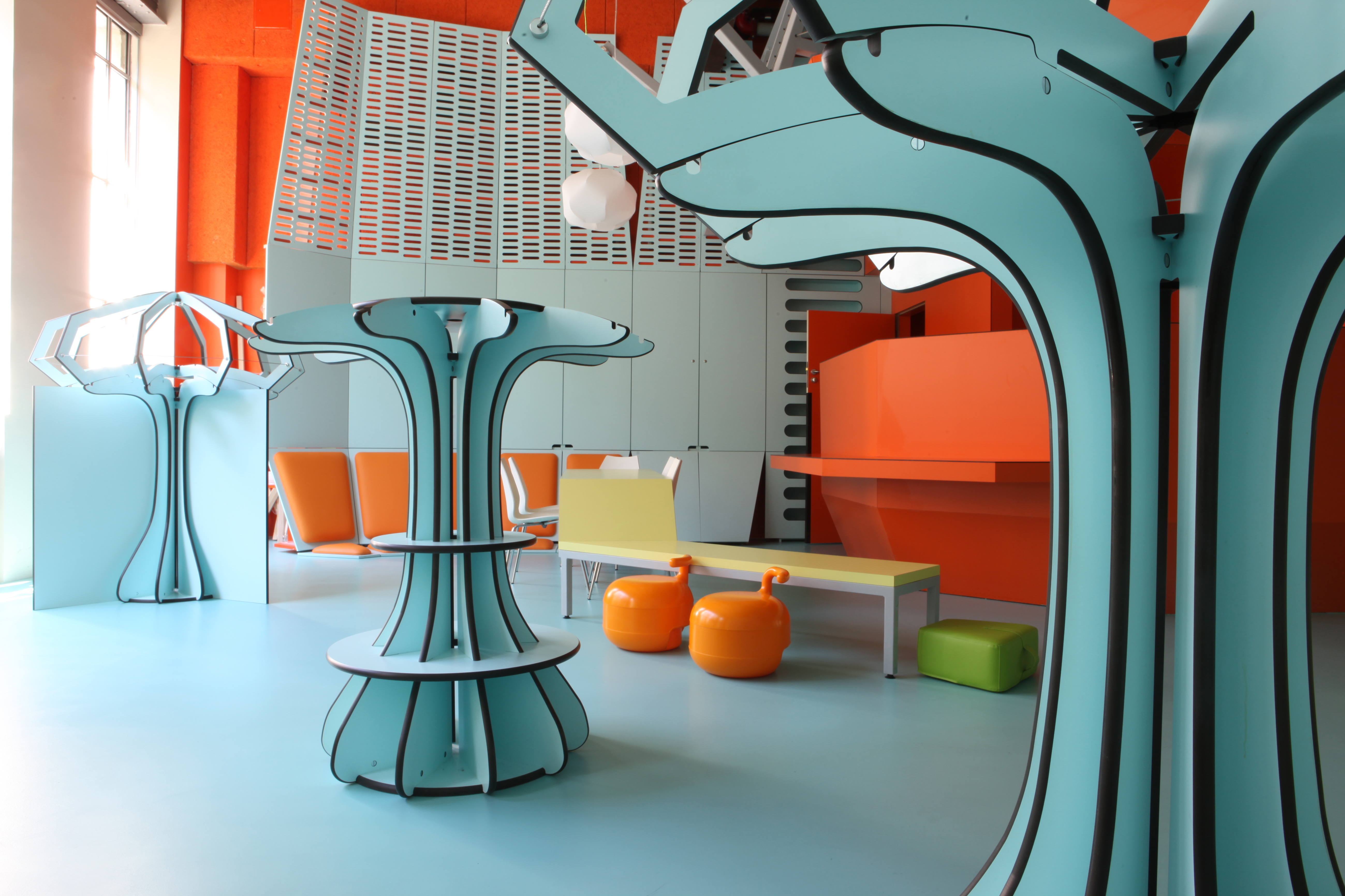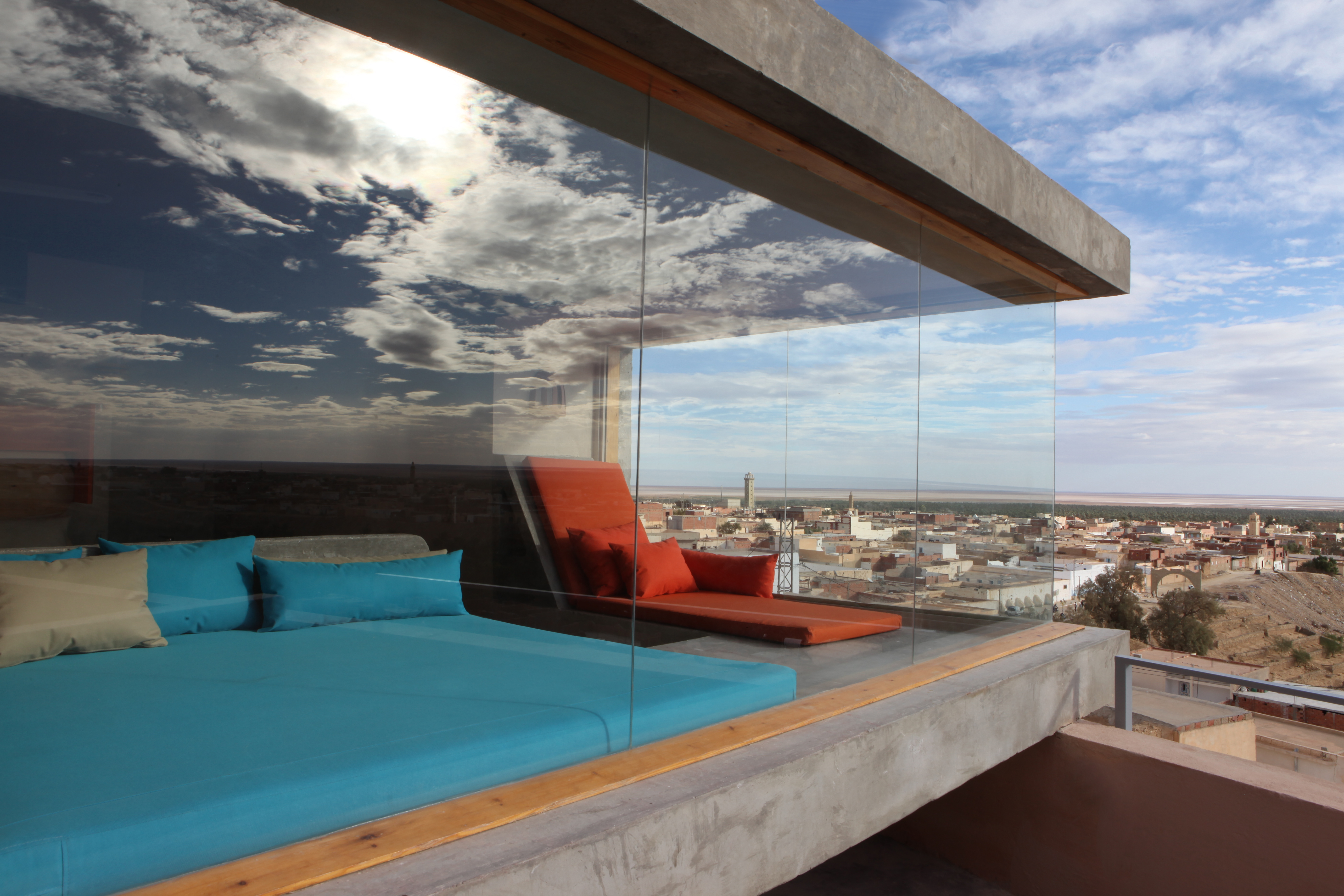
Since opening her Paris studio in 1998, Matali Crasset has been on a design mission: to influence how we live and interact with each other. In conversation, Crasset speaks about her practice, philosophy and projects.
You’ve always designed for a sharing culture and for nomadic living and working. How were you so far ahead the times? I always looked for a new logic in doing things. Design is profound and more than function. It addresses primary needs and fulfills unconscious desires. I drew from universal scenarios and rituals of everyday life and shared experiences. I came from a small village and understood the importance of community. My family was humble. I started with a blank page.
Is there a project that was especially satisfying? The common stove, which was commissioned for this year’s Ljubljana design biennial. Inspired by a traditional domestic object, I worked with the local school of carpenters to create a community stove that provides warmth in the forest, can be used to cook things and bake bread. It’s now permanent. It’s a sort of robot or small protector for the community. It blurs domestic and community spaces.
Does your work have an ideological agenda? To understand how we can better live, interact and work together. It’s even more necessary now. I start with a strong design intention and take time to understand the culture and context for each project.
Is there something “French” about your work? I hadn’t really thought much about that, but people tell me the combination of art or design and social impact is particularly French. This intersection or joining of life and culture makes sense. Culture is how we evolve. I like this idea more and more.

Is joy an aim or outcome? I don’t try to evoke an emotion but to affect human behavior. Design can transform. It can inspire you to become an active participant in life and society. I am optimistic. Optimism is important. It comes from curiosity. You have to be curious to try new things. I like working for curious clients and serving their curiosity. The Hi Hotel was quite important for me, allowing me to push the limits of innovation to create a new prototype for hospitality. My clients trusted me 110 percent. They were rare and generous, inviting me to collaborate on this project. I wanted to be equally generous.
How important is color? Color is life and life is color. Children love all colors. As adults, we forget about color because someone decides color reflects good or bad taste. We should be free, like children, to select colors we like. It’s something marvelous and gives pleasure. Color is spontaneous. It doesn’t need interpretation. Though colors have different meanings in different cultures, there is a something universal about them. It helps make my work more accessible. In a way, if you don’t wear colors, maybe you’re afraid of feeling. Maybe society, in a sense, is afraid of feeling.
Can you tell me about your iconic haircut? In a way, I didn’t select it, but it is a bit like Jeanne D’arc’s. I tried many different haircuts, but this one was “mine.” It allows me to breathe. I’ve had it since design school. I also like that it’s half male, half female. It’s my way of fighting preconceived codes of femininity.

How did working with Denis Santachiara and Philippe Starck impact you? I am so thankful to both of them. They gave me confidence. It was important for me to be first understood by other designers. They signaled what I was doing was interesting, which motivated me to go forward to find and refine my approach.
Is it true Brigitte Macron selected your furniture for her office? Yes! We have a very old organization French institution, the Mobilier national, which provides furniture and tapestries for official residences. Each year they solicit proposals from contemporary artists and designers. A number of these are selected and made. The patrimony is made available to the President and Ministers. About four years ago, I submitted a proposal for office furniture, which was selected. Since I don’t have any political agenda nor had I ever done this type of work, I didn’t want the piece to convey power. I wanted to express that its occupant was open and interested in listening to the visitor; to make the visitor comfortable and want to sit and have a talk with you. The piece has two different heights: one, allowing you to sit at the center to concentrate, and, the other, to be active and look at your books and files. It was completed about two years ago. You never know if anyone will select your piece. Some pieces never leave. Some users pick more traditional pieces from the 18th century. I always thought this desk could be for a woman, since it’s not so big. In fact, that was my hope. I also wanted it to be contemporary rather than decorative and to create a new typology for work.
Do you have any dream projects? No, I like to design for the dreams of others. I never dreamed I would design a hotel, do architecture or electronic music. Sometimes, dreams of others take you down a path you otherwise would not envision on your own.
What’s ahead for 2018? I’m working on a project for Centre Pompidou. My redesigns for Paris newsstands/kiosks will be installed next spring. I’m designing a scenography for the Philharmonie de Paris about Arab music and the exhibition “Velvet Underground: New York Extravaganza,” also designed for the Philharmonie, tours the U.S. with its first stop in New York.










 in your life?
in your life?

